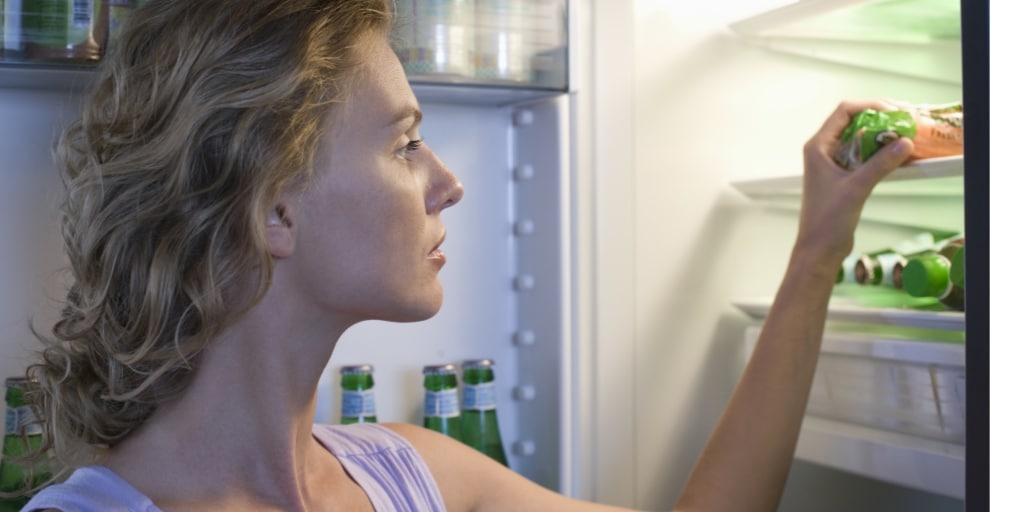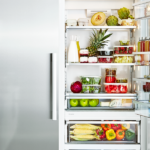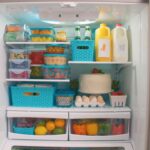| Getting your Trinity Audio player ready... |
I’ve written before about the best way to organize your fridge – and the importance of fridge organization in general. But there are some fridge organization mistakes I see often that are made simply because people do not know any better, they have an old fridge that is not as easy to organize as a newer model or even that they read some questionable advice on the Internet.
With all this in mind I’ve put together this list of fridge organization don’ts that you should keep in mind, whether you are planning a refrigerator organization project or no. Which you really should, for reasons explained later on here
An empty fridge is bad, an overfilled one even worse.
If it seems like something is in danger of spilling out every time you open the refrigerator door, you need to declutter and begin some serious fridge organization, and not just because you may be a food hoarder.
Packing your fridge to bursting often leads to forgotten foods, blocked air vents, impeded air flow, and reduced energy efficiency. That said, if your fridge is nearly empty, stock it with a few bottles of water, which when chilled, helps your fridge maintain an even cool temperature. The best practice is to try to keep your fridge two thirds full
Pre-cut fruits and vegetables at your own risk.
I know that a lot of people out there in the Internet – especially on Facebook – recommend washing and cutting fruits and vegetables before storing in the refrigerator to encourage healthy snacking, especially if there are kids in the house.
It’s a great idea, in theory. However, the problem is that chopped-up produce will deteriorate faster since more surface area is exposed. The best practice is not to wash and cut until you are ready to eat it.
You’re doing it wrong if you store milk in the door.
The warmest spots in your refrigerator are inside the door and the top shelf. Since milk is liable to spoil, it should go in the middle shelf, which enjoys consistent temperatures. Same goes for eggs. Don’t put them in the egg compartment of your door if you have one (that compartment is an example of outdated design and is not a feature in most modern fridges.)
Store condiments, like ketchup and mustard, which are usually high in vinegar and salt, in the door. And if your fridge has dedicated spots for dairy and sandwich meats, make sure to take advantage of them when executing your fridge organization project. The top shelf is ideal for snacks and leftovers.
Your fruits and veggies make terrible drawer mates.
If you have a newer fridge, you likely have two specifically marked drawers, one for vegetables and one for fruits. It can be tempting to slide some greens from an overflowing veggie drawer to the fruit side on farmer’s market days, but try to resist the urge.
Why? The veggie drawer in a modern fridge is calibrated for high-humidity produce (greens wilt slower when there’s moisture) and the fruit drawer is set for low humidity (fruits rot slower in low humidity). Another reason to keep greens and fruits separated: the ethylene from fruits can result in vegetables spoiling too quickly.
The exception? Strawberries. How many times have you been excited to open a new basket of strawberries only to find them mushy or moldy?
You can extend their freshness by storing them in the vegetable crisper instead of the fruit drawer. Like vegetables, strawberries enjoy humidity (though not too much, so don’t wash them before you store them) and don’t tolerate ethylene.
Meats should be stored on the lowest shelf.
There are only two places to store your meat: in the freezer compartment or on the lowest shelf of the refrigerator, where it can’t drip onto any foods. Place a tray under the meat on that lowest shelf; it helps to contain any possible leaks and makes it super-easy to clean in case of spillage. Which cuts down on the number of times a year you’ll have to clean and organize your fridge again (yay!)
Trays, bins, and baskets have a place in the fridge.
You’ve heard me advocate often for the organizing power of trays, bins, and baskets throughout your home—and that extends to your refrigerator. Just as it’s visually pleasing to see pantry shelves compartmentalized with the help of bins and lazy Susans, a refrigerator that takes advantage of these organizational tools is a joy to behold and use.
Try using a tray to hold meats on the bottom shelf, a bin to hold condiments that don’t fit into the door, and a colander to hold oranges (citrus doesn’t mix well with ethylene-producing fruits).
A disorganized fridge leads to food waste.
According to a Johns Hopkins University study, 31 to 4o percent of the American food supply is wasted, and Americans spend $161.6 billion a year on food that goes to waste. One way to combat food waste as an individual is to make sure you know what’s in your refrigerator.
Take the time to really organize your fridge and find a place for everything—and there will be far fewer what-is-that-jar-of-mold-lurking-in-the-back moments. You may even want to designate an “Eat Me First” bin of food items that will go bad soon.
Ready to get your home more organized but don’t know where to start? Just Organized by Taya can help. Contact us today to discuss how.
- The Time-Blocking Secret to Organizing Your Home - November 4, 2025
- Yes, You Can Have an Organized Home with Small Children - October 30, 2025
- Creating a Holiday Command Center: Festive Organization Made Easier - October 28, 2025






